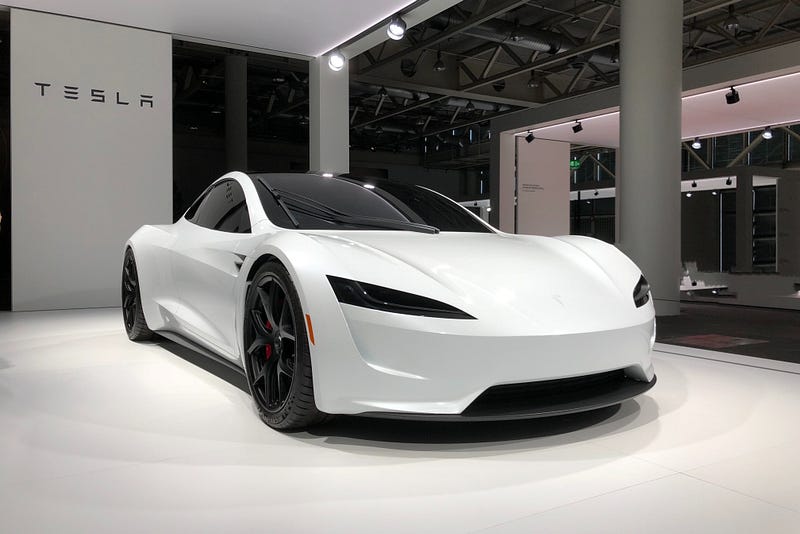The 4680 Battery Dilemma: Tesla's Promises vs. Reality
Written on
Chapter 1: The Promise of the 4680 Battery
Tesla’s 4680 battery was heralded as a groundbreaking advancement, but the reality has proven to be quite different. Initially announced by Musk in September 2020, this large cylindrical cell was expected to be significantly cheaper, quicker to charge, and more energy dense than any prior Tesla battery. Fast forward two years, and while Tesla has begun integrating 4680 batteries into its vehicles, the anticipated revolutionary improvements have not materialized. A recent analysis by the renowned Sandy Munro has revealed that the current 4680 batteries are underperforming compared to Tesla's older 2170 cells. What’s the issue, and can Musk rectify it?
Section 1.1: Expectations vs. Current Production
To understand the situation, we need to revisit Musk's original claims about the 4680 battery. He touted several innovative features, including a tabless design, dry-coated electrodes, zero cobalt content (which has significant environmental implications), a silicone anode, and a structural battery pack. The larger format was supposed to reduce the number of individual cells needed, thereby lowering assembly costs. The combined effect of these advancements was expected to yield a battery that would outperform all competitors.
Some Model Ys are currently equipped with a structural 4680 battery pack, where the cells are embedded in a resin-like material, enabling them to serve as a load-bearing element within the vehicle’s chassis. This design simplifies the assembly process and reduces costs, with the current 4680 packs being $3,600 cheaper to produce than the previous $11,000 2170 packs.

Section 1.2: Unfulfilled Innovations
However, the reality of Tesla's 4680 batteries has fallen short of expectations. Recent teardowns have indicated that most of the groundbreaking technologies Musk promised have not yet been implemented. The only features that have been realized are the tabless design, the larger size, and the structural battery. What many initially thought was a cutting-edge innovation has turned out to be merely a larger version of Tesla's previous cells.
Chapter 2: Emerging Concerns with the 4680 Battery
A more alarming teardown by Sandy Munro has uncovered significant shortcomings in the 4680 cells. They found that these cells contain a 100% graphite anode, a high concentration of cobalt, and an energy density of only 244 Wh/kg. This is not only far below the target of 296 Wh/kg, but it also lags behind the older Panasonic-made 2170 cells, which managed to achieve 269 Wh/kg thanks to a higher nickel ratio and a silicone anode.
Fixing Tesla's 4680 Battery Problems | NEW DBE Director Matt Tyler - YouTube
The reason Musk has not opted for the established technology appears to be tied to the soaring nickel prices, exacerbated by geopolitical tensions, and challenges in scaling 4680 production. In an attempt to lower costs, he seems to have chosen a less effective battery chemistry, compromising energy density and relying on environmentally damaging cobalt.
Section 2.1: The Impact of Low Energy Density
The implications of this reduced energy density are significant. Each 4680 pack consists of 830 cells, with each cell weighing 355g, culminating in a total pack weight of around 294 kg. Given the current energy density, this translates to an overall capacity of just over 71 kWh. At a production cost of $7,400 per pack, the cost per kWh stands at $104.
While this is an improvement over the 2170's cost of around $130 to $140 per kWh, it still falls short of Tesla's ambitious goal of $60 per kWh. Additionally, recent analyses have shown that individual cells in the 4680 structural pack cannot be replaced without damaging the others, meaning that if one cell fails, the entire pack must be replaced. This raises concerns about long-term maintenance costs compared to the more sustainable 2170 packs.
Report reveals revolutionary NEW Tesla 4680 battery cell only months away - YouTube
Chapter 3: Competing Technologies
Fortunately, there are alternative battery technologies that are not only cheaper than the 4680 but also allow for individual cell replacements while being more environmentally friendly. For instance, CATL is already supplying cobalt-free LFP cells for the Model 3 SR at approximately $80 per kWh. Although these batteries might have a lower power output, they charge as quickly as other Tesla models.
Moreover, innovations like CATL's sodium-ion battery and BYD’s Blade Battery are on the horizon, expected to surpass the 4680 in terms of cost-effectiveness and performance. Both could potentially reach prices below $50 per kWh. Given their unique chemistries, these alternatives are not only safer but also charge more rapidly and are less harmful to the environment than the current 4680.
Conclusion: A Call for Change
In summary, Tesla's much-anticipated 4680 battery has yet to deliver on its promises. The challenges facing this project are significant, particularly as upcoming models like the Cybertruck, Roadster, and Semi rely heavily on the success of the 4680. Musk must act swiftly to either revitalize 4680 production with the promised advancements or pivot towards utilizing third-party cells that are already outpacing the 4680 in performance and cost. Failure to do so may result in Tesla lagging behind as competitors embrace these new technologies, leaving the 4680 project in the dust.